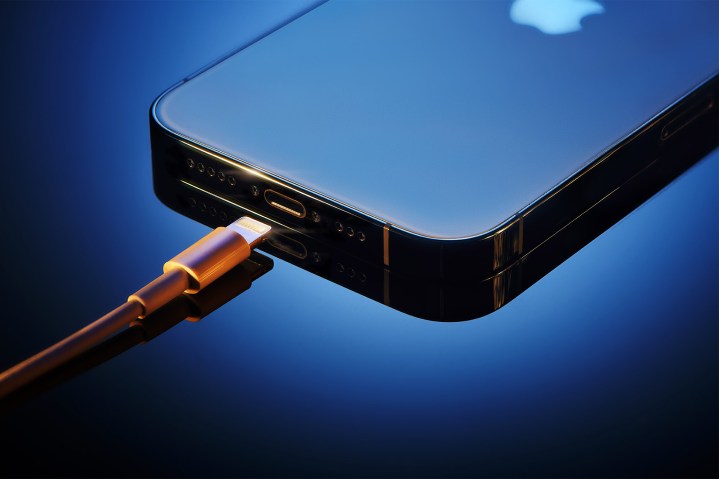The EU is reportedly planning to vote in favor of a landmark regulation that will mandate the adoption of USB-C for smartphones and tablets, forcing Apple to drop the Lightning port on iPhones. According to a Reuters report, EU lawmakers and delegates are set to meet at an event on June 7. During that meeting, the proposal for universally adopting the USB-C port will be agreed upon as the unified standard for all phones and tablets sold in the region.
“The trilogue next Tuesday will be the second and likely the final one between EU countries and EU lawmakers on the topic,” says the report, hinting that the remarkable manifesto will finally get the approval and get enacted as law. The debate around a universal charging standard was broached nearly a decade ago, but in the years that followed, Android makers have moved to the USB-C ports to a large extent. Apple, meanwhile, has remained loyal to the cause of its proprietary port on iPhones.

In September last year, the European Union outlined its plan to harmonize USB-C as the default charging solution for all phones and tablets sold in the area. The ultimate goal is to reduce the growing environmental stress from electronic waste while also saving the average consumer from spending more money on different kinds of cables and adapters depending on the gadgets in their pockets.
The current target is 2024 for the legislation to be enforced, allowing enough time for device manufacturers to make the transition. Once implemented, it would be illegal for a brand to sell devices lacking a USB-C port. Of course, Apple stands to lose the most. Apple has vehemently lobbied against such rules, arguing that they would slow down innovation.
In February 2022, we heard chatter that the USB-C legislation might be adopted by the end of this year. In addition to phones and tablets, the plans are to eventually extend the USB-C mandate to more categories like headphones, cameras, and video game consoles. A few months later in April, members of the European Parliament voted overwhelmingly in favor of standardizing the USB-C port.
Apple is already there, sort of
Apple, despite showing its public reluctance toward the EU’s plans, has gradually warmed up to the idea. The USB-C port first arrived on the pricey iPad Pro, and then made its way to the cheaper iPad Air and iPad mini tablets. But the tablets are nowhere close to matching the iPhone’s sales figures, and with it, the potential to sell Lightning cables and charging adapters for the phones that now lack these accessories in the retail package.
Let there be smartphone port harmony!
But it looks like Apple is at least experimenting with putting a USB-C port on iPhones. As per a Bloomberg report, Apple is testing iPhones that ditch the proprietary Lightning interface in favor of a USB-C port for charging and file transfer. Additionally, the company is also said to be testing adapters that would work with accessories that were designed with the Lightning port in mind.
The switch to a USB-C iPhone isn’t supposed to happen until 2023 at the earliest. That gives Apple the necessary headroom to prepare for the EU’s proposed 2024 deadline for adopting the USB-C standard. That means a USB-C iPhone 14 is almost guaranteed to not happen, but when the iPhone 15 eventually comes around, that’s when things may get interesting.
Editors' Recommendations
- Are you having iPhone alarm problems? A fix is coming soon
- Nomad’s new iPhone case and Apple Watch band may be its coolest yet
- Why you should buy the iPhone 15 Pro instead of the iPhone 15 Pro Max
- 3 reasons why I’ll actually use Anker’s new iPhone power bank
- Here’s how Apple could change your iPhone forever



